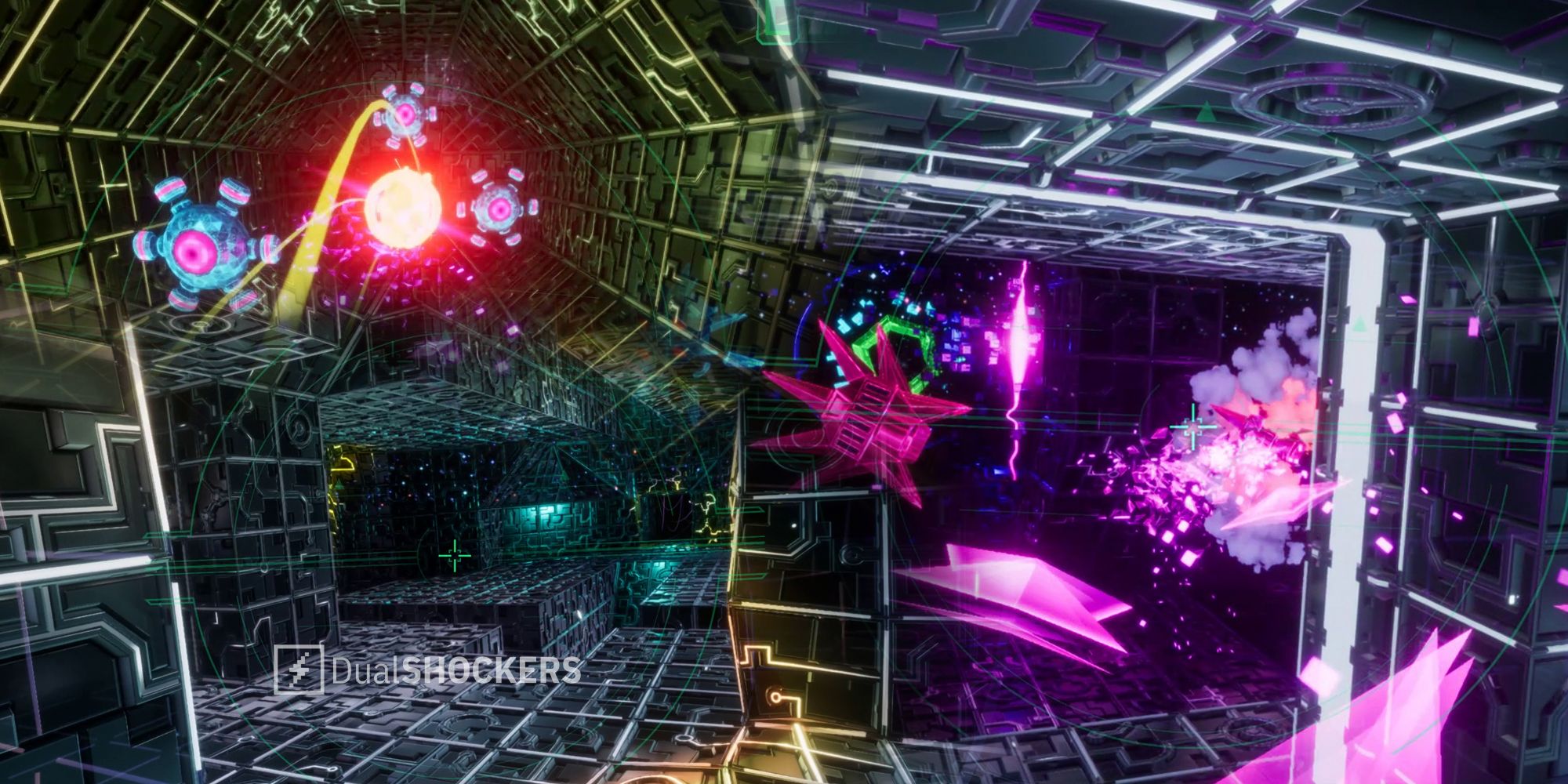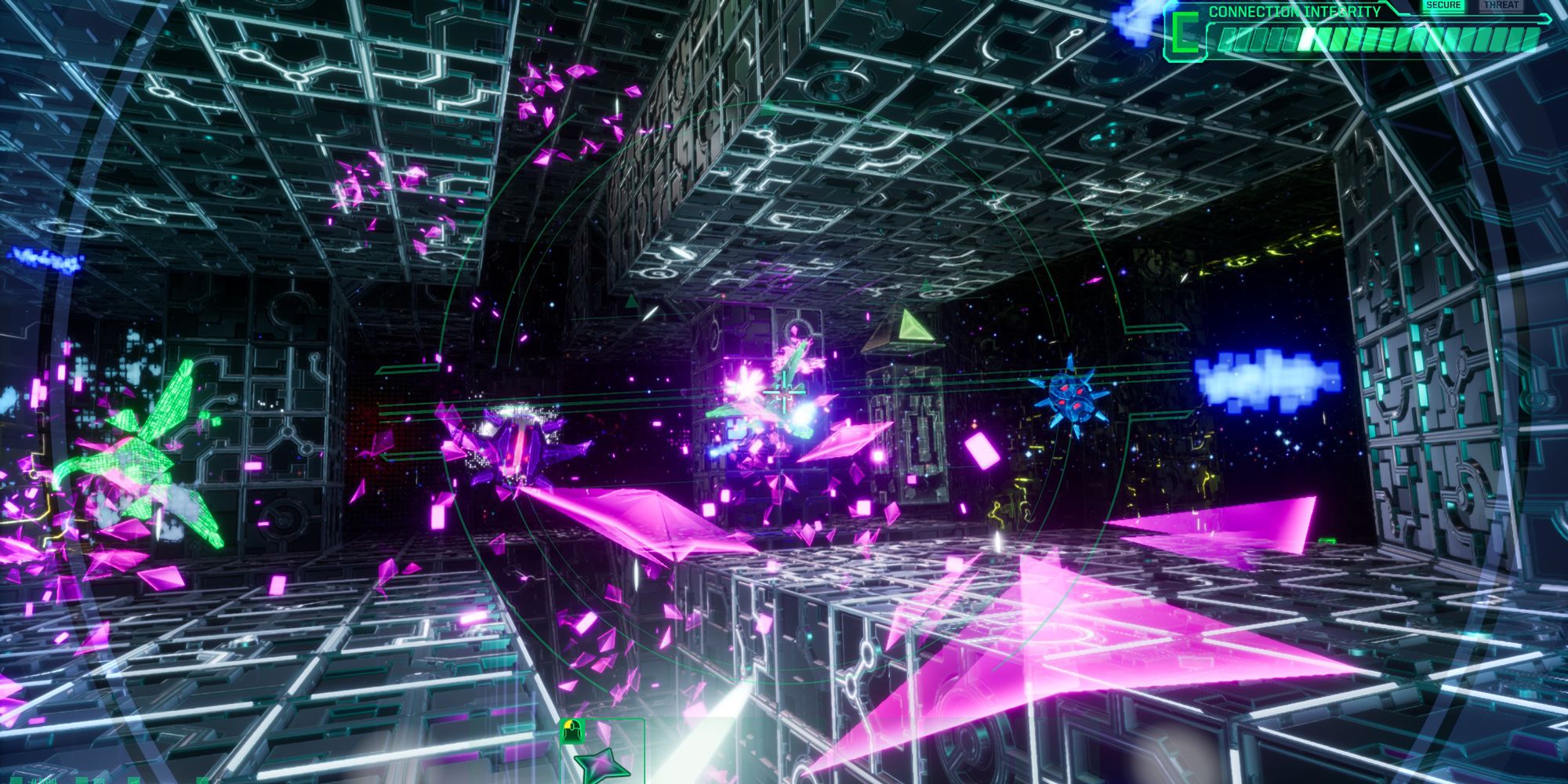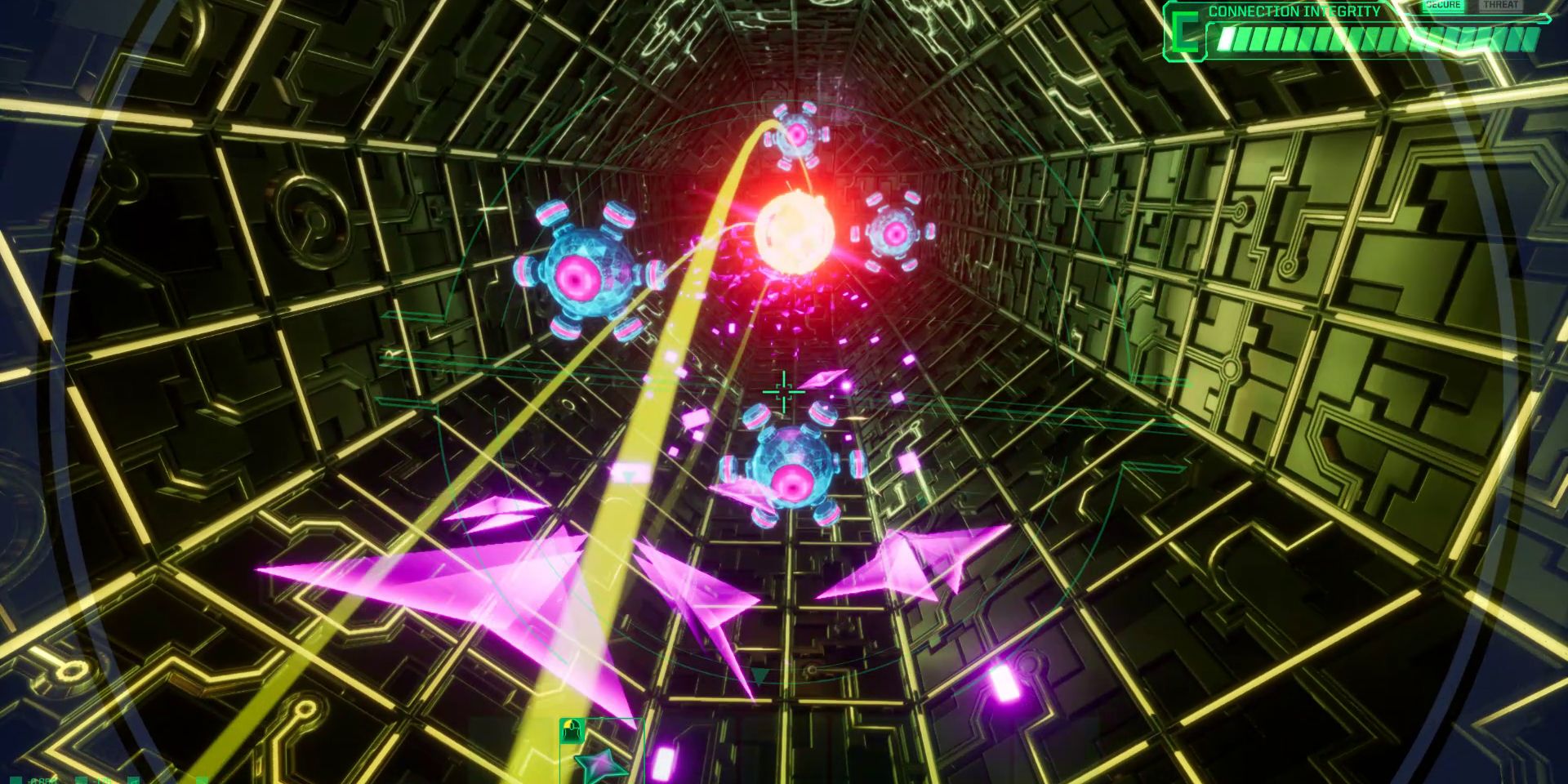I had a tough time with the remake of System Shock, begrudgingly admiring its steadfast loyalty to the original game, while ultimately concluding that it just feels too archaic and frustrating for a game released in 2023. I just think that you can be old-school without literally feeling like a game stuck 30 years in the past, but I'm saving that particular rant for another piece.
All that said, there was one aspect of the System Shock remake that really did click with me, and that was Cyberspace—a vibrant neon-lit digital dimension that you access through special terminals, within which you fight cool cyberblocky manifestations of various computer viruses infecting the station's security systems. It plays basically like a psychedelic synthwave version of Descent (and if that's too obscure a reference for you, then think of it like 'Doom but with the gravity-free mobility of a spacecraft).
Cyberspace is absolutely beautiful for a start, with some stunning visual magic going on. You're hovering through tunnels and arenas that are made of these blocks that vary between neon blue and glistening gold, and occasionally undulate in pretty little cyber-waves. As I bob my head to the smooth synthy soundtrack, I actually wonder if the waves sync up with the music, but I'm not sure; what's for certain is that it all flows together for a mesmerising and immersive little experience.
You can't see faraway walls in Cyberspace, presumably to cut down on visual noise, but instead of just having a fog of war, in the distance you instead see a cosmic backdrop of stars, with strange geometric machinations seemingly operating just outside the walls of the area you're exploring. Then, as you get closer to the boundaries of the explorable area, those goldy-blue walls fade into view, and the backdrop and machines residing within it disappear, like it was a mirage all along. It's probably the coolest fog-of-war effect I've seen in a game (though the scrawled maps of Civilization 6 get an honourable mention).
You go through Cyberspace in what we can only assume is a cybercraft, as you explore it free of gravitational constraints, and can rotate in such a way that up and down lose all meaning. There are various enemy kinds, from little blue buggers that mindlessly charge you, to green cyber-insects that spray a beautiful revolving display of deadly projectiles your way, to larger ones that beset you with boomerang-like rounds that you can rebound with your own fire. On the later Cyberspace levels, it can feel a bit like you're playing first-person Galaga, as vast numbers of enemies and bullets fill the screen, and every time you kill an enemy they explode in a shower of little cyber-shards.
There's a whole progression system here too, which carries over across the multiple Cyberspace levels you encounter throughout the station. You'll eventually count decoys, speed boosts, damage multipliers, and a homing ice drill among your arsenal, as well as the option to just bail out of Cyberspace altogether. It all makes for a welcome reprieve from the mazey corridors of the main game, and—to me at least—the combat was actually way more exciting than the easily exploitable combat of the main game.
Funnily enough, Cyberspace is the one area where Nightdive actually did some notable redesigning. In the original System Shock, Cyberspace had various nodules and switches that could toggle things in the real world, and navigation was generally more confusing, to the extent that in the original Cyberspace you could actually find arrows to point you the right way (and that's a huge navigational concession for a game from back then to make!). Cyberspace in the remake is streamlined, relatively linear, and easily comprehensible. While I in no way think the game proper should be linear, I still feel it could've applied some of the modern design touches offered in Cyberspace.
With a bit of fleshing-out, I wouldn't mind seeing those Cyberspace sections get a game of their own, and it made me wonder what happened to those games like Descent and Forsaken, which combined close-quarters FPS combat with the mobility of space shooters. A little digging helped me uncover a Descent spiritual successor in the works called Ships That Fight Underground, but having heard recently that it's going to be F2P and blockchain-based, I'm not getting too excited about that one.
Until a true Descent successor comes along, I'll always have Cyberspace.



